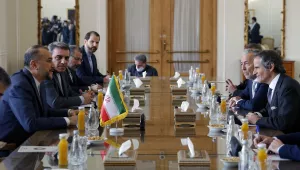Iran and Saudi Arabia, as the two major players in the Persian Gulf and the Middle East, are members of all key disarmament conventions against production, stockpiling, and use of weapons of mass destruction. In 2005, the Dubai-based Gulf Research Center proposed establishing the Gulf region as a WMD Free Zone (WMDFZ). The proposal was left untouched, and conditions for such a declaration have even deteriorated since then. Are there any regional institutional dynamics at work to influence the willingness or unwillingness of the Gulf States to enter into a WMDFZ? The question of the demand for a disarmament regime in the form of a WMDFZ, or the feasibility of the willingness of Iran, and Saudi Arabia to move toward an institutionalized WMDFZ in this region is elaborated in terms of the functions of regional patterns of military, economic, and politico-cultural cooperation. The exchange of relations is considered the benchmark of the willingness or unwillingness to co-operate, which formulates regimes of action in high or low drive to approach a WMDFZ in the region.
Please join us! Coffee and tea provided. Everyone is welcome, but admittance will be on a first come–first served basis.
Co-sponsored by the International Security Program


